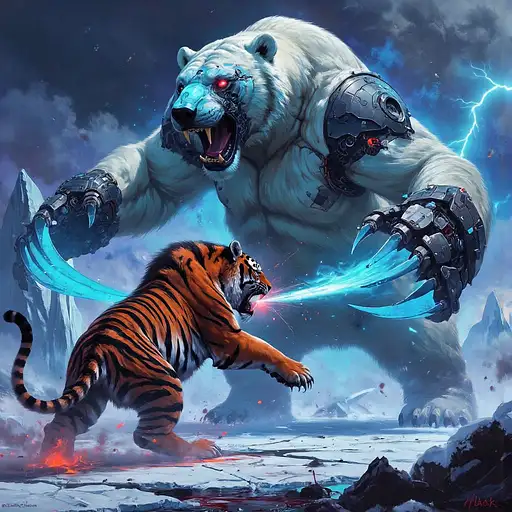
9 months ago
A ferocious and cinematic battle unfolds amidst a raging blizzard, where a towering 6-meter-tall battle polar bear clashes with an equally massive and enhanced battle tiger. The polar bear, standing on its hind legs, roars with primal fury, its blue robotic eye glowing through the swirling snow. Its massive steel claws gleam as they swipe downward in a savage attack, creating arcs of reflected light in the chaos. Deep scars and patches of armor plating cover its snow-white fur, the cold wind whipping around its hulking frame. Opposing the bear, the tiger, equally enormous, crouches low before springing into a powerful leap. Its fiery orange fur, streaked with black stripes and plated with patches of reinforced armor, contrasts starkly against the icy landscape. The tiger’s glowing red cybernetic eye locks onto the bear, its enhanced steel claws extending mid-strike as it lunges forward with ferocious intent. Steam rises from its breath, visible in the freezing air, as the two titanic creatures engage in brutal combat. The blizzard intensifies around them, with thick waves of snow and ice partially obscuring their forms, creating a dynamic and chaotic atmosphere. The icy ground beneath them is cracked and shattered, marked by streaks of crimson and claw marks, evidence of the relentless violence of their battle. Behind them, jagged ice formations loom in the distance, barely visible through the storm. The lighting is cinematic, with flashes of distant lightning illuminating the clash. The glow of the polar bear’s blue robotic eye and the tiger’s red cybernetic eye cut through the darkness, adding a futuristic edge to their primal fury. The bear’s steel claws reflect cold, silvery light, while the tiger’s metallic enhancements gleam with a faint orange hue, emphasizing their cybernetic power.

